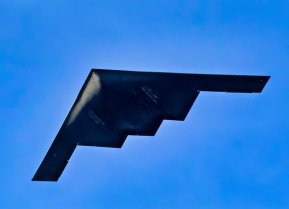The Royal Navy's Type 31 Frigate Looks Like a Real Powerhouse
The Royal Navy's Type 31 Inspiration-class frigate, the HMS Venturer, has successfully passed its factory acceptance tests, marking a significant milestone in its development.
Summary: The Royal Navy's Type 31 Inspiration-class frigate, the HMS Venturer, has successfully passed its factory acceptance tests, marking a significant milestone in its development. Constructed by Babcock under a £1.25 billion contract, these frigates are based on the Arrowhead 140 design. The comprehensive testing included the Integrated Communications System, TACTICOS Combat Management System, and the Integrated Bridge and Navigation System. This achievement paves the way for the HMS Venturer's delivery, expected in 2025, and underscores the collaboration between the Royal Navy, Babcock, and Thales. The Type 31 frigates, part of the UK's national shipbuilding strategy, are set to replace the aging Type 23 Duke-class frigates. They boast advanced capabilities like vertical launch systems and sophisticated gun systems, all while requiring significantly fewer crew members, a strategic adjustment to address recruiting challenges. The Royal Navy plans to have all five Type 31 frigates operational by 2028, enhancing its fleet with modern, efficient warships.
Royal Navy's Type 31 HMS Venturer Passes Key Tests, Edges Closer to Service
The lead vessel of the Royal Navy's Type 31 Inspiration-class frigates recently completed its factory acceptance tests.
British shipbuilder Babcock, which leads the Team 31 consortium, is building five of the general-purpose frigates for the Royal Navy based on the Arrowhead 140 design. They are operating under a £1.25 billion ($1.59 billion) contract awarded in November 2019.
Thales, as part of Team 31, is also responsible for the delivery and integration of the full Type 31 mission system, which comprises the combat system, integrated communications system (ICS), and integrated bridge and navigation system (IBNS). According to the British contractor, the first Inspiration-class vessel completed the three main system-level factory acceptance tests, which included the tests of the ICS last September. This was followed in November by tests of the TACTICOS Combat Management System including the main radar, electro-optical sensors, and integration with the ship’s missile and gun systems. The IBNS factory acceptance test was also completed last year.
The successful completion of those tests brings the first ship of the class, the HMS Venturer, one step closer to delivery.
"Working closely with our Royal Navy and Babcock colleagues we are delighted to have successfully completed this critical stage in the development of the Royal Navy's new Type 31 frigates," said Nigel MacVean, managing director of above water systems UK at Thales.
Five of the Type 31 frigates are being built for the Royal Navy, while an additional five variants will be produced for the Polish and Indonesian navies – three for the former sea service and two for the latter.
National Shipbuilding Strategy
The 5,700-ton vessels were developed as part of the UK's national shipbuilding strategy. They will replace the Royal Navy's aging Type 23 Duke-class frigates later this decade and will operate alongside the service's eight submarine-hunting Type 26 frigates.
The warships are being constructed at the brand-new assembly facility in Rosyth dockyard in Scotland, where Babcock laid the keel of the future HMS Venturer in April 2022. The keel for the second vessel of the class, the HMS Active, was laid in January 2023.
The HMS Venturer is on track to enter service in 2025. She will be equipped with a helicopter flight deck and boat bays. Advanced weaponry will include vertical launch systems capable of firing Standard Missile SM-2s, SM-3s, and SM-6s, Tomahawk cruise missiles, and SeaSparrows, among others.
Each Type 31 frigate will further be outfitted with sophisticated multipurpose gun systems, such as a Bofors 57 Mk3 medium-caliber gun along with two Bofors 40 Mk4 small-caliber guns.
The UK-based shipbuilder plans to deliver all five Type 31 frigates by 2028.
Smaller Crew Required for Type 31 Frigate
The Type 31 will reportedly operate with less than one-third of the present vessels' crew, an adjustment meant to help address the Royal Navy's recruiting woes. The future warships will require a crew of just 50 officers and sailors – significantly fewer than the 185 personnel that operated the Type 23 frigates.
As the Telegraph reported, crew sizes on frigates have been gradually decreasing for centuries. In the age of sail, the Royal Navy frigate HMS Naiad, at the time of the Battle of Trafalgar in October 1805, carried a complement of 284 sailors.
Numbers remained at a similar level for the first steam-powered vessels, notably the HMS Amphion, which was commissioned in 1847 with a crew of 320. By the Second World War and the Cold War, frigate crews were down to less than 200 sailors. Now just 50 will be required to operate the vessel – likely resulting in a few more amenities and possibly a bit more personal space, something any sailor can appreciate.
Author Experience and Expertise: Peter Suciu
Peter Suciu is a Michigan-based writer. He has contributed to more than four dozen magazines, newspapers, and websites with over 3,200 published pieces over a twenty-year career in journalism. He regularly writes about military hardware, firearms history, cybersecurity, politics, and international affairs. Peter is also a Contributing Writer for Forbes and Clearance Jobs. You can follow him on Twitter: @PeterSuciu. You can email the author: [email protected].
Image Credit: Babcock.


